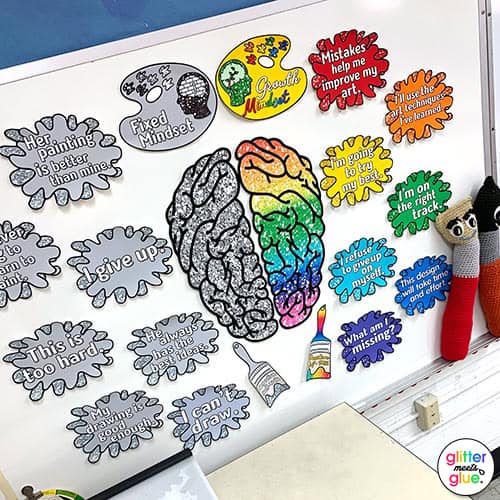
After 17 years of teaching art and listening to students put themselves down for not having enough “talent,” I decided to employ a growth mindset in art this upcoming school year.
My intention is to get students thinking more about their internal negative conversations and hopefully get them to change those unhealthy beliefs.
I find that students (and some parents) think they’ll be graded on their “talent” as opposed to their ability to try new things. And that simply isn’t true!
Defining Growth Mindset
Having a growth mindset is basically believing that everyone has the same opportunity at learning and growth. It’s understanding that intelligence, ability, and character aren’t fixed.
Carol Dweck, author of “Mindset: The New Psychology of Success” defines these beliefs we hold about ourselves as “self-theories.”
These belief systems can cause us to think we’re a “great teacher” or a “poor teacher.” Or in the case of our students, “smart” or “dumb.”
They are a barrier for achieving personal and professional growth starting at an early age and can have far-impaction reach into one’s happiness later in life.
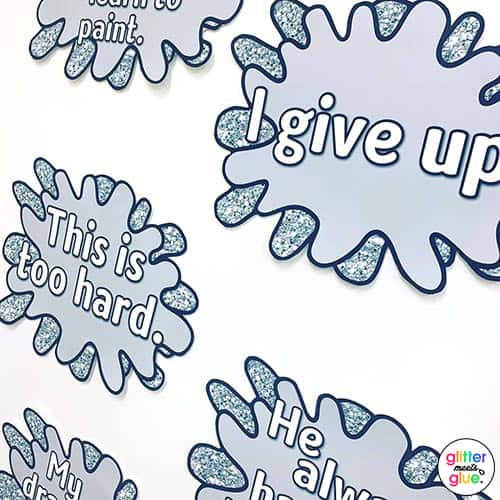
Fixed Mindset
The art room is an environment ripe with internal conflict.
Students often measure their self-worth based on the work their peers create or even what they feel they should be capable of. They mentally document their self-perceived talents (and that of others) instead of developing their skills.
This in turn generates a fixed mindset where students feel “talent” is a barrier they can’t cross and therefore they won’t try. For them, to be successful means you have to have innate “talent.”
However, a fixed mindset isn’t just about maintaining a negative “self-theory” about yourself.
Growth Mindset
On the opposite end of the spectrum, a student who believes they have learned all they can on a topic is also placing a barrier for further learning and exploration. These students strive for success and work to avoid failure to maintain their positive “self-theory.”
[Side note: Between the two types of students, I have personally found the later to be hard to navigate towards a growth mindset than the former.]
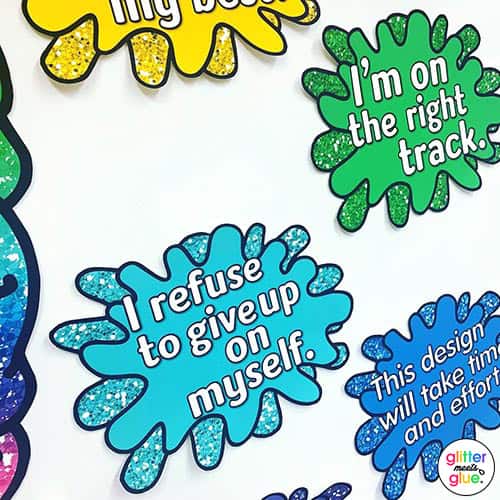
On the contrary, a growth mindset is one where students are working towards skill acquisition and achievement.
Students who employ a growth mindset believe that effort and dedication to learning will lead to success.
They thrive on challenges and when unsuccessful, they use it to their advantage to learn and grow further.
These students inner dialog might sound like this: “I’m on the right track” or “I’ll use the art techniques I’ve learned” to improve.
Starting Off the Year Right
To help visualize the concept mindset, I created a giant brain with one half gray and the other half in rainbow colors. I printed out common phrases that I hear students say often. Each has an equivalent growth mindset phrase to accompany the fixed one.
I’m hoping these will appeal more to my older students who I find I need to expend the most amount of energy. I use neutral colors for the “fixed” version as those colors feel more stagnant than the rainbow ones I used to illustrate “growth.”

Growth Mindset Posters for the Classroom
This bulletin board will be used as a means of teaching about mindset.
I want my students to understand the basics.
And I hope with the phrases listed there, they will recognize their own voice on either side of the brain.
In short, I intend to:
- Demonstrate we all face the same challenges but we internalize it differently.
- Show how being successful at art involves practice and dedication, not “talent.”
- Create more opportunities for peer-to-peer and class-wide critiques in art. I don’t do enough in this area. Students need to learn to hear critiques of their work in order to learn and grow from one another.
- Verbally support student effort and not innate abilities. I think I do this well, but I I’d like to be more cognizant of it.
So what do you think? Do I have my work cut out for me? Have you tried growth mindset in the art room? If you have, I’d love to hear your thoughts.
If you’re looking to employ this philosophy in your art room next year, check out my bulletin board set. It’s designed specifically for art teachers.

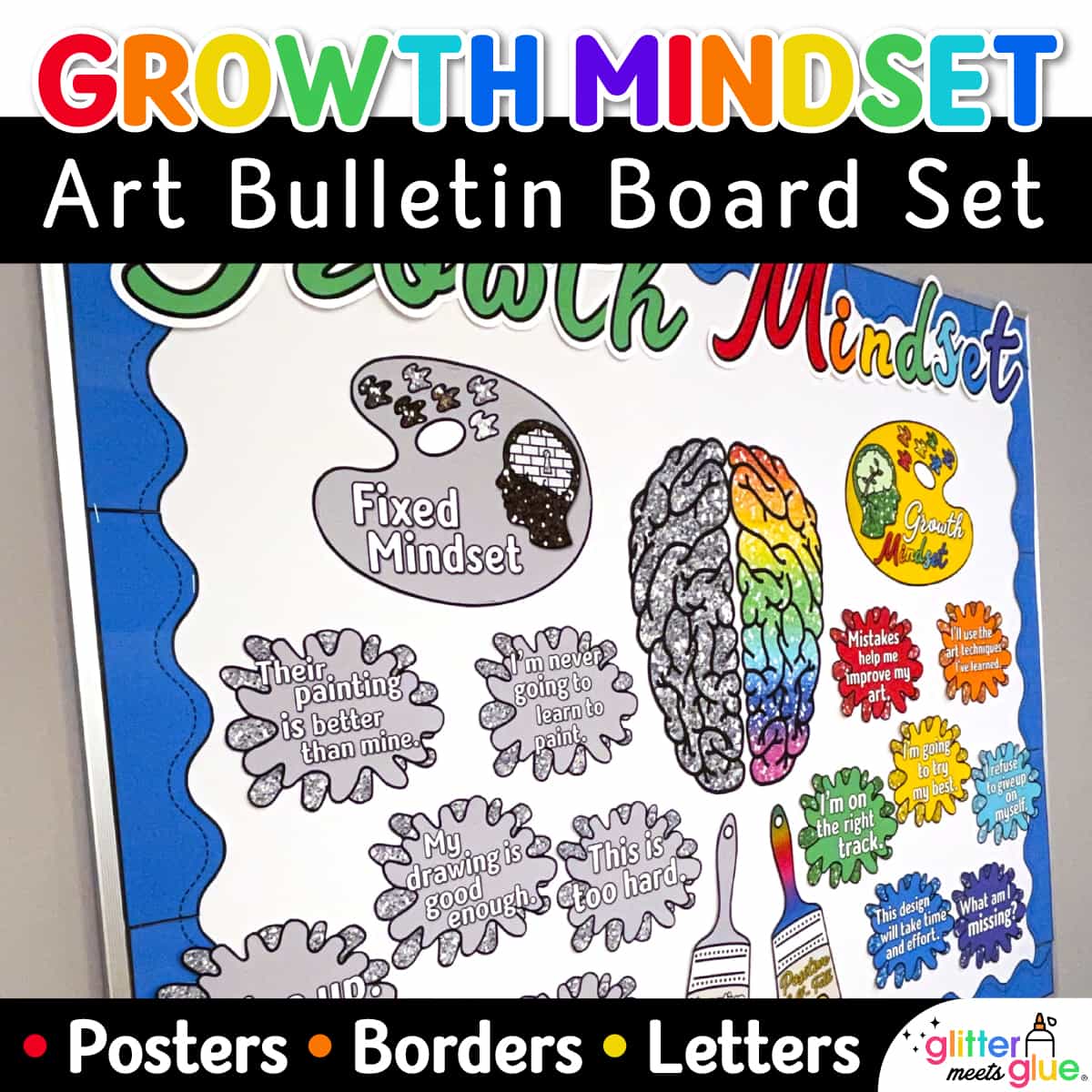

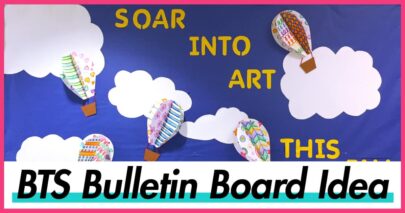
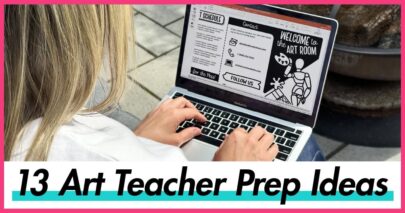
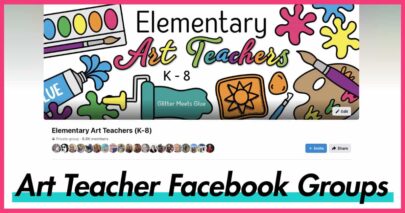
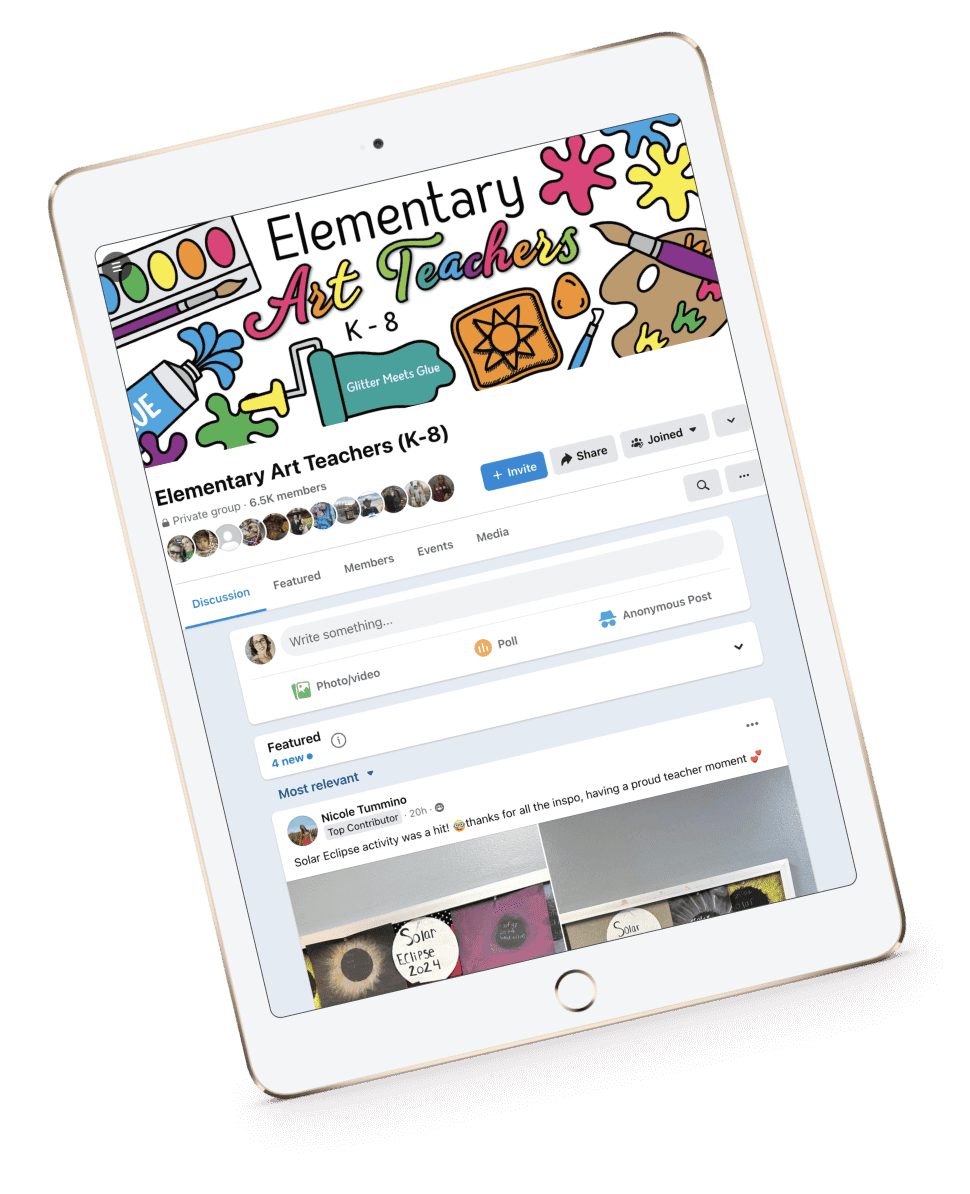

Did you add this to Teachers pay Teachers yet? If so, would you post the link? I would like to purchase it.
Hi Jane, I’m working on it as I type this. I’m considering posting a couple versions, one in each TPT store I have. The version in my blog post better matches the aesthetic in my Photo Clipz store, so I’m figuring that out, too. I just have one hurdle to clear first: https://www.teacherspayteachers.com/Store/Photo-Clipz
I recently made a blog post about this very issue. I will edit it to include a link to this article. http://thehelpfulartteacher.blogspot.com/2016/04/on-messing-up-trial-error-and-creative.html?m=1
Love it! This is brilliant. I love the attention to detail within each brain and the overall use of color.
You could definitely convert this into a digital poster and sell a ton (I think).
Thank you for sharing – I’ve been trying to think about how to convert all of my reading on Growth Mindset into hopeful, clear advice to my students and this does it!
Hey Alison, I’m just finishing up spiffying up these posters to put on Teachers Pay Teachers. Several other people had suggested it and I’m going to follow through. Have two TPT stores so I might do another set for that store which would be great for older students. Thanks for leaving a comment!
What does it say on the blue framed paper?
Is there away to get a copy of this or something? We have a way to pro t poster size I would just need the image. I didn’t see anywhere that you were selling it?
hi there: I was wondering what you used for the image of the brain on the bulletin board? I am hoping to make a similar one for my class this year!
Hi, I teach Art, so I just drew it from an image of a brain I had on hand. I made some adjustments to make it fit the shape of the paper. If you don’t teach art, you could locate an image you like and post it on your smartboard/screen, overlap paper on top, and trace it. I did this when I was working on a mural project. I drew out an image but I needed it to be projected…but I had no projector. So I snapped a picture of my drawing, emailed it to myself, and posted it on my smartboard.
Think the most powerful part of what you’ve created here for kids is your use of color. The growth mindset side of the chart is just blooming, as the students will do when they change their thinking. The stagnant side looks stagnant even before reading because of the somber shades.
I love the way you encourage your students to try new things rather than limit themselves by whether they think they have talent or not!